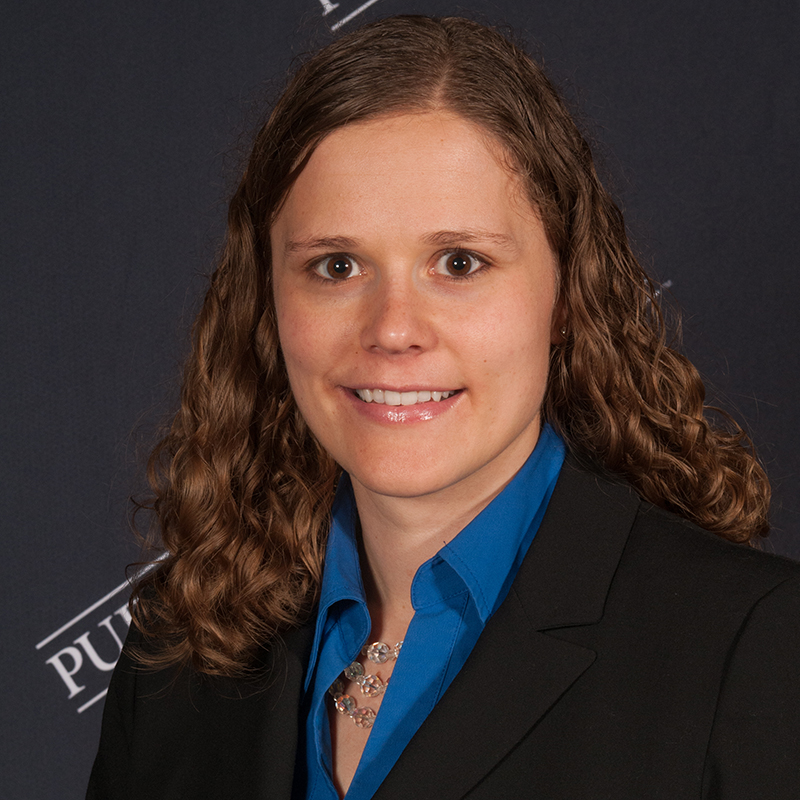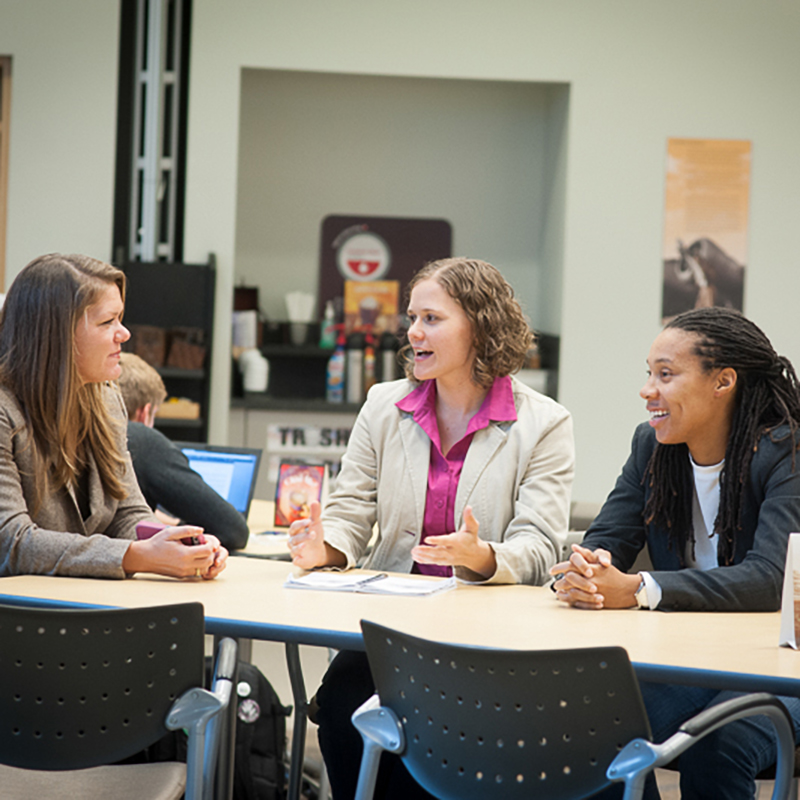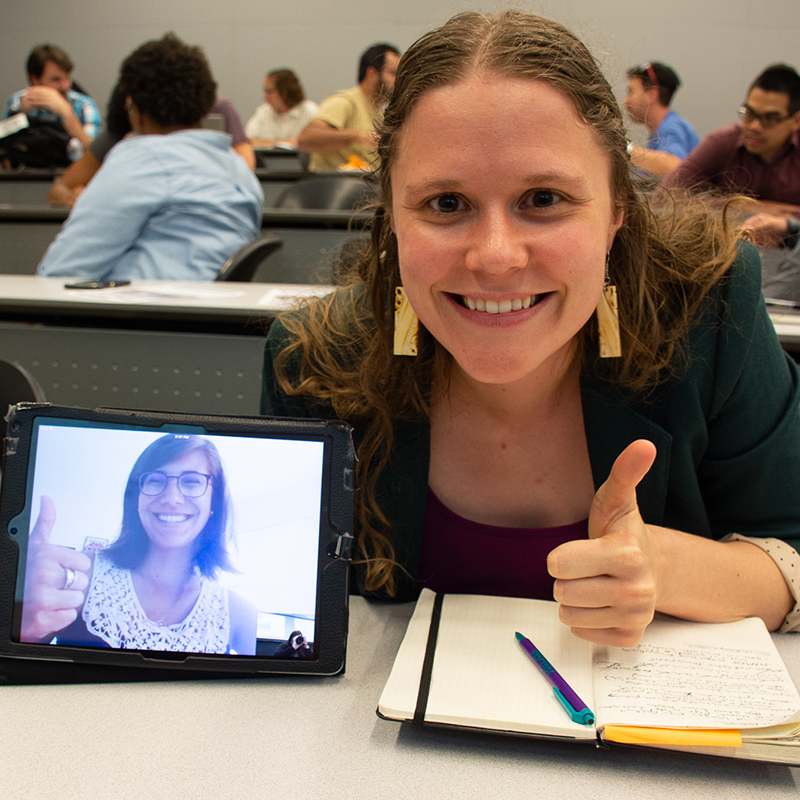Dr. Emilie Siverling
 Emilie Siverling
Emilie Siverling
Dissertation Defense: June 14, 2019
Committee: Dr. Tamara Moore, Dr. Sean Brophy, Dr. Selcen Guzey, and Dr. Amy Marconnet
Heat Transfer Conceptions Using an Engineering Design-Based STEM Integration Unit: A Case of Struggle
In the United States, there has been an increased emphasis on science, technology, engineering, and mathematics (STEM), and especially engineering, in pre-college settings. There are several potential benefits of this, including: increasing the quantity and diversity of students who pursue STEM careers, improving all students’ technological literacy, and improving student learning in the STEM disciplines. While current standards support the integration of the four STEM disciplines in pre-college classrooms, research still needs to be done to determine which models of STEM integration are effective and how and why they impact student learning.
The context of this study is a model of STEM integration called engineering design-based STEM integration. The purpose of this study was to do an in-depth exploration of students’ use of science conceptions during an engineering design-based STEM integration unit, with specific focus on how certain features of engineering help or hurt students’ use of science conceptions. For this study, the unit was designed to address middle school-level physical science concepts related to heat transfer, including temperature, thermal energy, and processes of heat transfer (i.e., conduction, convection, and radiation). An embedded case study methodology was used to explore students’ science conceptions while they participated in an engineering design STEM integration unit. The case was one student team from a seventh-grade science class, and the students within the team were the embedded sub-units. Data were collected on each day of the unit’s implementation; these data included video of the student team and entire classroom, audio of the student team, observations and field notes, and student artifacts, including their engineering notebooks. Data were analyzed using primarily methods from qualitative content analysis. Themes emerged for the whole team, with emphasis on specific students when appropriate.
The results show that there were a few key features of engineering that helped and hindered students as they used heat transfer conceptions. During much of the problem scoping stage, which included the science lessons focused on heat transfer, students used mostly scientific conceptions about conduction, convection, and radiation. However, when they needed to think about those three processes of heat transfer together, as well as apply them to the context of the engineering design challenge, the students began to use a larger mix of scientific conceptions and alternative conceptions.
Several alternative conceptions emerged when they combined ideas and vocabulary from conduction and radiation to create one set of rules about thermal properties of materials (i.e., did not distinguish between conduction and radiation). Even when they used scientific conceptions, the students sometimes applied the conceptions unscientifically when designing, which led them to create a prototype that performed poorly. However, then the student team learned from the failures of the first design and redesign, during which they appropriately used mostly scientific conceptions. In other words, the opportunity to learn from failure and redesign was critical to this team’s use of correct conceptions about heat transfer.
Two other features of engineering that emerged were teamwork and communication through notebooks. Students on the team learned from each other, but they learned both scientific and alternative conceptions from their peers. Engineering notebooks proved to be somewhat helpful for students, since they referred to them a few times when designing, but more importantly they were helpful in revealing students’ conceptions, especially for one student on the team who rarely spoke.
The findings of this study contribute to future development and implementation of other engineering design-based STEM integration curricula because they show how various features of engineering influenced this student team’s use of science conceptions. In particular, the results demonstrate the importance of giving students the opportunity to learn from failure and redesign, since this process can help students use more scientific conceptions. Additionally, it is important for curriculum developers and teachers to think carefully about the transition from problem scoping to solution generation and how to add better scaffolds for students to combine concepts from their science lessons and apply them correctly when designing. These results also have implications related to heat transfer conceptions, as the student team in this study demonstrated some scientific and alternative conceptions that were already in the literature, but they also used alternative conceptions when they confused the concepts of conduction and radiation, which are not in literature about pre-college heat transfer conceptions. These findings suggest that more research should be done to explore the interaction of engineering design and science conceptions, especially heat transfer conceptions.Memories with Emilie

October 2013: PhD in Engineering Open House - Seated in Amelia's in the basement of Armstrong Hall, Emilie is talking with Meagan (ENE PhD '14) and Trina (ENE PhD '17).

August 2017: Emilie with fellow PhD student and friend Natascha Trellinger Buswell (ENE PhD '17) during an ENE research seminar.
